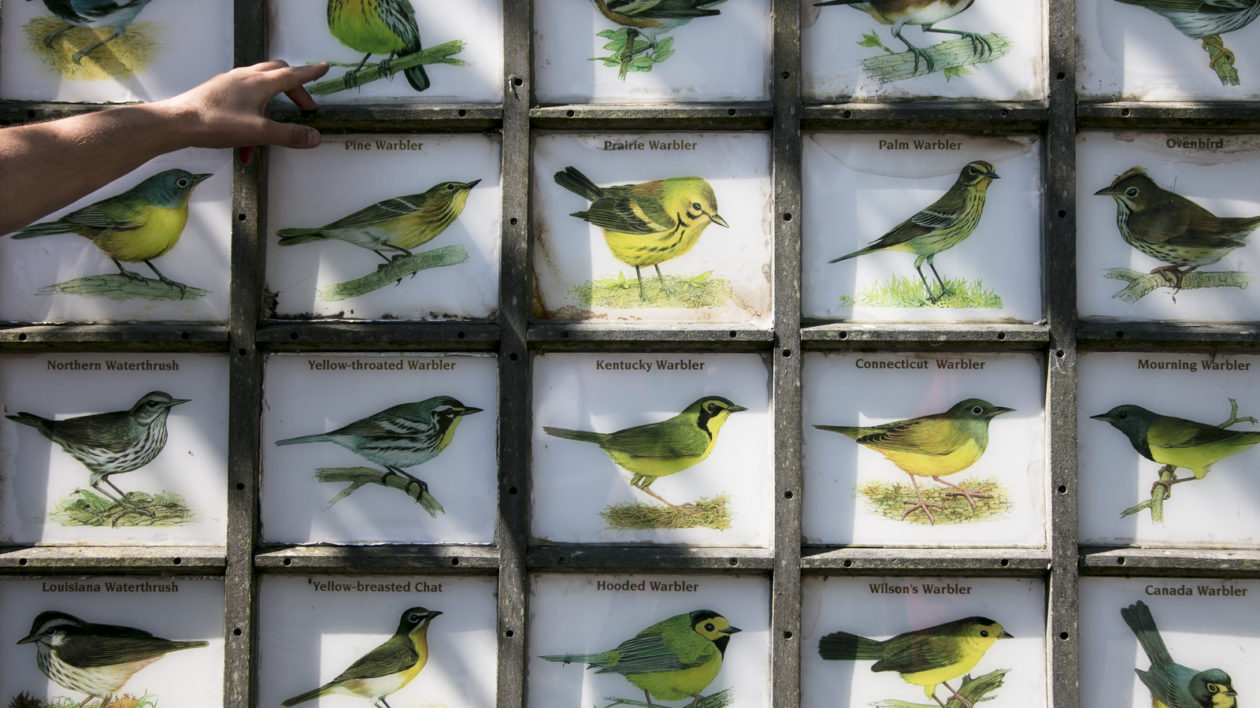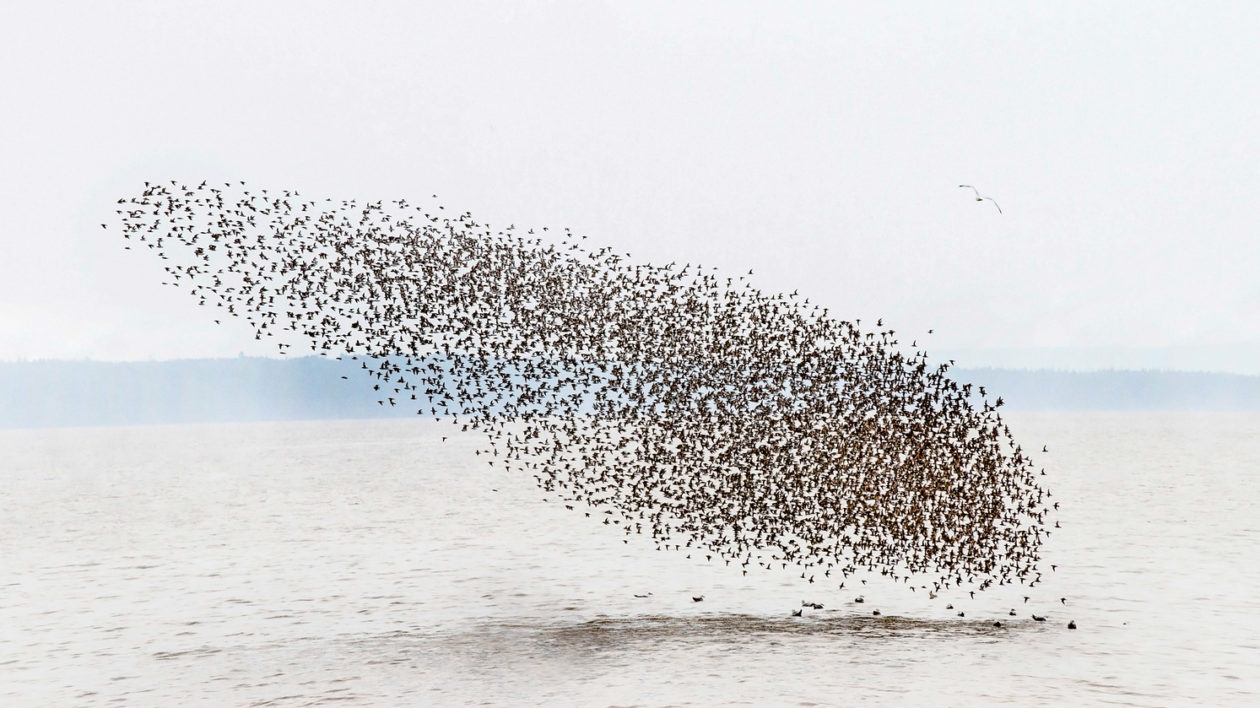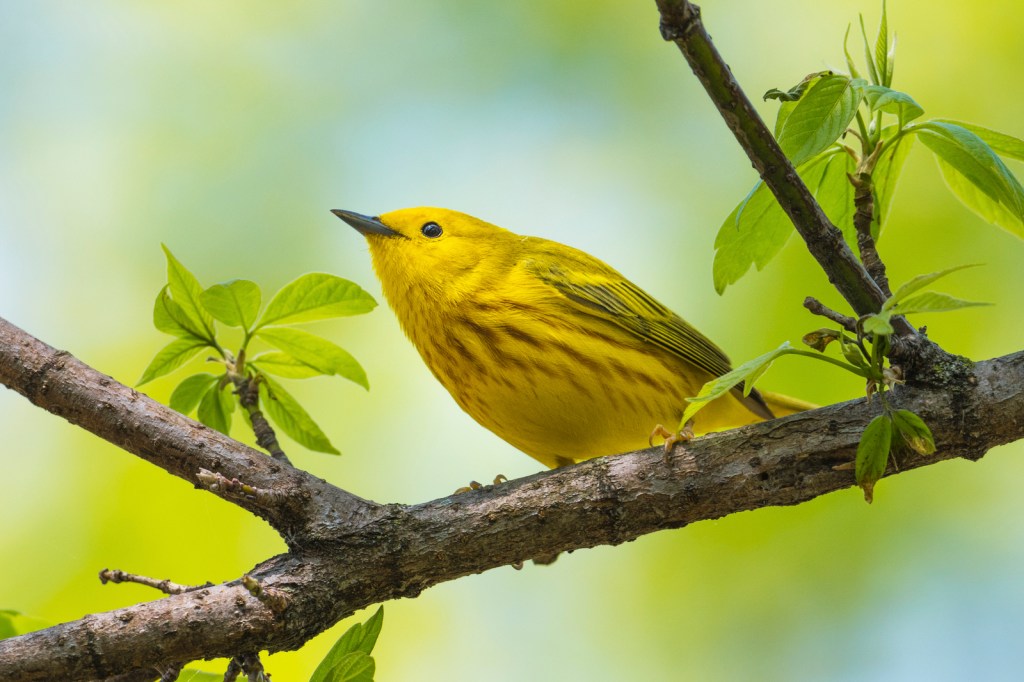The flocks of warblers and vireos descend on the woodlands to feed and rest after a grueling migration, and to fuel up for the next leg of their journeys. At a casual glance, the scene looks timeless. But for the birds, this always-risky return to breeding habitats is becoming more so. Increasingly, odds are there’s something missing: the insect larvae that provide most of the calories for their journey.
Most of the larvae hatched two weeks earlier. The birds can’t find food.
The writer David James Duncan once compared situations like this to running a marathon. Imagine if you completed on of the great long-distance races, and as you crossed the finish line you found no food, drinks or place to rest. There was only a sign: “You’re going to have to run another twenty-six miles to another finish line. Maybe they can help you there.”
It’s perhaps an imperfect metaphor. But many birds do find themselves in a similarly exhausting situation, thanks to climate change. As they cross states and continents, their stops to rest may no longer match up to hatching insects, blooming flowers and fruiting trees.
This month, birding enthusiasts visit the Great Lakes region en masse to enjoy the wonders of migration—and add new species to their life lists. The Biggest Week in American Birding Festival in northwest Ohio is a cherished annual tradition, drawing tens of thousands of visitors to the region. And they’ll undoubtedly see large numbers of interesting birds. But conditions are changing.
What can we do about it?

Migratory Birds in a Changing World
Scientific literature is clear that climate change affects the seasonal cycles of plant and animal life, the field known as phenology. Whether it’s wildflowers blooming earlier in the Rockies or mayflies shortening their entire life cycle, the changing climate can have dramatic phenological impacts. Those changes can have cascading ecosystem effects, including on migratory birds.
This spring, the National Phenology Network indicates that for birds along eastern and central flyways, leaves are appearing on time or early in the south, and late as they head north – a year of “hurry up and wait,” with potential to change rapidly as spring continues.
However, within a given landscape there are differences (sometimes subtle) in topography, landforms, types of soil and bedrock. These differences can in turn affect the timing of insect hatching or plant blooming, even in a relatively small geographical area.
“It often does not take much elevational difference to influence phenology,” says Kim Hall, climate change scientist for The Nature Conservancy.
The Nature Conservancy leads a project called Conserving Nature’s Stage that considers geophysical factors that influence biodiversity. The project seeks to include characteristics like topography and soil type into conservation planning, as scientists expect that representing the full range of variation in these factors in protection plans, and ensuring that important sites are connected by natural land cover, will help landscapes and species adapt to climate change.

Protecting sites with ecological and topographical diversity is also important for migratory birds. Hall coauthored a paper with David Ewert that called for increasing protection of sites that “retain variation in the phenology of resources during the migratory period.”
“Basically, conservation planning has to help hedge bets for birds,” says Hall. “They may not find insect larvae in one site, but in a lower elevation area, or on he cooler side of a hill, or near a cold groundwater-fed wetland, the larvae may still be abundant and available.”
For some, this may be a break in traditional conservation that solely considers species richness or size of habitat when considering protection priorities. But just because an area is biodiverse or large does not necessarily mean it will have the topographical diversity necessary for phenological variation.
“Some habitats can be quite small but have soil or moisture characteristics that affect when plants bloom, and that in turn impact when insects hatch,” says Hall.
Hall says there are many examples of how different habitats can buffer against climactic changes. For instance, migratory bird habitat adjacent to coastlines and rivers can protect food and cover from late spring freezes. Open water tends to act as a buffer against cold weather, providing just enough protection to keep leaves from serious damage. Leaf health in turn means better insect survival, which means more food for birds.

An Important Role for Birds
Conservationists can perhaps better understand the impacts of climate change on birds for one reason: We know a lot about them. And one of the reasons we know a lot about them is because people love them. In fact, millions of people take part in citizen science projects including recording birds at their backyard feeders and participating in annual Christmas Bird Counts.
This wealth of data allows conservationists to move beyond a site-by-site evaluation of risks and responses to climate change towards a better understanding of what’s happening across the landscapes that support millions of migrants.
In fact, Hall is currently mentoring NatureNet Fellow Jon Walter, who is analyzing large citizen science datasets to model the diversity and stability of bird communities. “There’s a trend that characteristics like variation in topography and landscape connectivity are positively correlated with the diversity of breeding birds,” he says.
Walter is looking specifically at the synchrony of population in birds across large geographic areas. Again, diversity in the rise and fall of populations across large areas suggests that risks to birds are varying in response to local conditions, and that over time an abundance of offspring in one areas can offset declines in other places.
If all populations are fluctuating in the same pattern, researchers expect that risks are higher. If they shift towards declines at the same time, there’s no surplus of offspring to help populations recover.

Hall believes data like this offer another benefit: connecting people to a broader understanding of climate change, and how we can respond. “Addressing climate change does not only mean reducing carbon emissions, as essential as that is,” she says. “We have a lot of data on birds. Changes in phenology have been some of the earliest and most frequently documented climate change impacts. Anyone who loves birds can contribute to our continued understanding of how migration is changing. Similarly, advances in citizen science and accessibility of datasets that cover the full range of species are giving us new insights into how birds are are responding to climate change. Both kinds of data should also inform our land protection strategies for migration and the breeding and overwintering seasons.”
That land protection strategy, she emphasizes, must focus on maintaining variety and “options” across large regions. She’s working on an effort to map resilient terrestrial areas that help conservationists prioritize the most important areas to protect.
“Climate change has complicated impacts,” she says. “Research like Jon Walter is conducting provide us with tools for understanding population-wide impacts that utilize large-scale datasets. This isn’t just about timing, not just about range boundaries, but it’s trying to tease out climate signals in complicated patterns of changes happening across large areas.”
As you head out to catch the spring migration, those complicated patterns may seem to lie well beyond the reach of your binoculars. The woods you’re birding may look much the same. But nonetheless, your observations matter: After all, it’s the recorded sightings of birders and other citizen scientists that are helping scientists track changes in migration and phenology. The work wouldn’t be possible without them.
Your sighting adds a data point that can help shape a better future for migratory birds and a climate-resilient future.




I live in Sarasota FL and have a back yard full of vegetation done in the permaculture manner. I have plants that attract bees and butterflies and see bats at night circling my yard. I do see black birds and a few cardinals but since I do not observe them as I should they may be more I do not notice. I will look into getting involved in an organization locally that can point me in the right direction. Thank you for this article as it has opened my eyes to how important climate change is to birds.
Mr. Matthew Miller:
Thank you for all of your efforts in trying to save these birds, I’m sure if the birds could talk they would thank you themselfs.
I love birds!!thank you for all of , you do